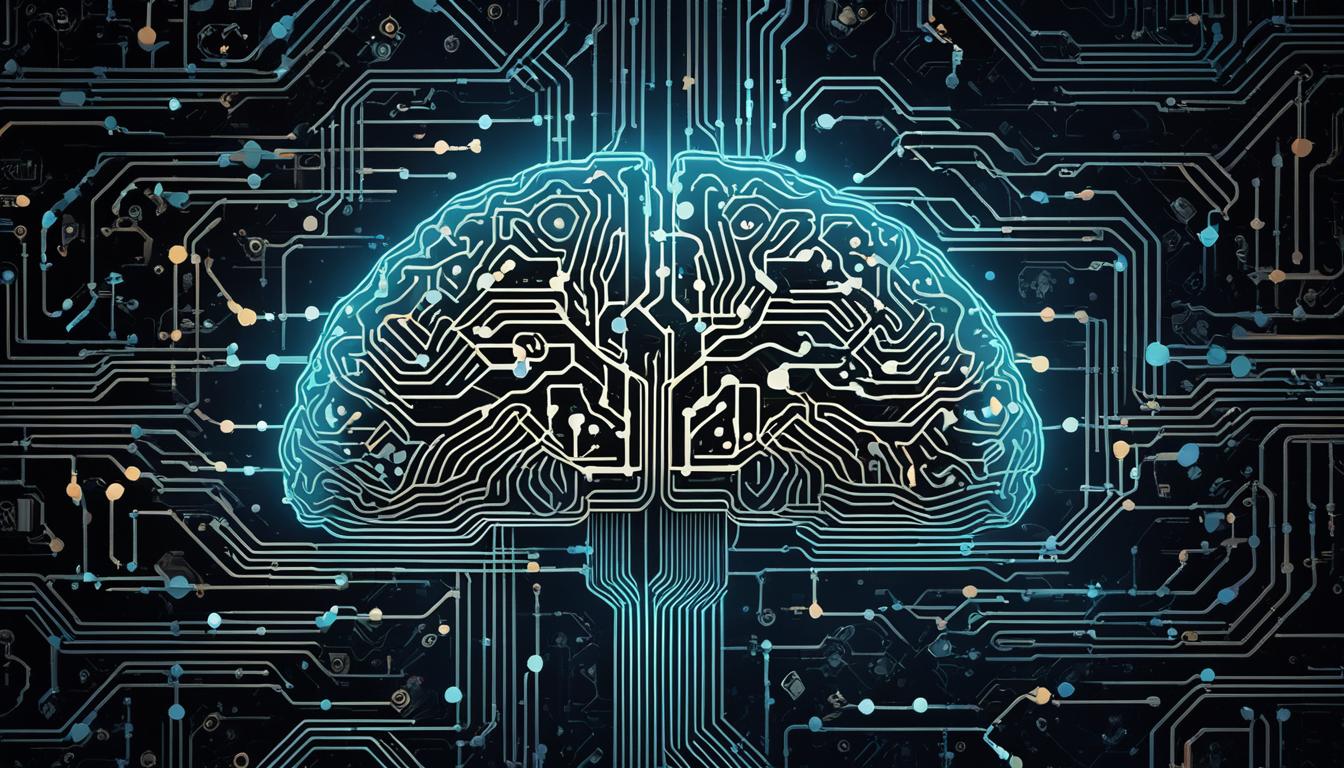Artificial intelligence (AI) is a complex field that often intimidates people with its technical jargon and concepts. However, it doesn’t have to be difficult to comprehend. In simple words, AI refers to the ability of machines, particularly computer systems, to simulate human intelligence. This means that machines can perform tasks that typically require human intelligence, such as recognizing patterns, making predictions, and even engaging in natural language conversations.
AI has become increasingly integrated into our daily lives, and you may already be interacting with AI-powered systems without realizing it. From personalized recommendations on streaming platforms to voice assistants like Siri and Alexa, AI is all around us. Its potential goes beyond convenience; AI has the power to transform various industries by automating repetitive tasks, improving decision-making processes, and enhancing data analysis.
While the benefits of AI are substantial, it is crucial to address the ethical and societal concerns that arise with its implementation. Questions about privacy, data security, and the potential displacement of jobs need to be carefully considered. Nevertheless, understanding the basics of AI and its applications can help you navigate the rapidly evolving technological landscape and make informed decisions.
Contents
Key Takeaways:
- AI refers to the simulation of human intelligence by machines, allowing them to perform tasks that typically require human intelligence.
- AI is already integrated into various aspects of our lives, from personalized recommendations to voice assistants.
- AI has the potential to transform industries by automating tasks, improving decision-making, and enhancing data analysis.
- Ethical and societal concerns, such as privacy and job displacement, need to be considered when implementing AI.
- Understanding the basics of AI can help you navigate the evolving technological landscape and make informed decisions.
The Evolution of AI and Its Impact
Artificial Intelligence (AI) has a rich history that dates back to the 1950s. Over the years, it has achieved significant milestones and made a profound impact on various industries. Let’s delve into the fascinating journey of AI and explore its transformative effects.
The Early Years:
In 1956, the first artificially intelligent computer program, Logic Theorist, was developed. Following this breakthrough, the creation of the Perceptron in 1957 paved the way for early artificial neural networks. These achievements laid the foundation for the future development of AI and its potential applications.
Breakthrough Moments:
The 1960s witnessed the development of chatbots like ELIZA, advancing AI’s capabilities in natural language processing. In the 1980s, the Japanese government allocated significant funding for AI research, emphasizing its importance and potential. One of the defining moments in AI history came in 1997 when IBM’s Deep Blue defeated world chess champion Gary Kasparov, showcasing AI’s ability to surpass human intellect in strategic thinking. These milestones propelled AI into the spotlight.
Impact on Industries:
AI’s impact spans across various sectors, revolutionizing the way industries operate. In healthcare, AI assists medical professionals in diagnostics, treatment recommendations, and patient monitoring, improving patient outcomes. Finance benefits from AI’s fraud detection capabilities, streamlining operations and safeguarding against financial crimes. Transportation is being transformed by autonomous vehicles, making travel safer and more efficient. The potential applications of AI are vast and continue to shape industries in unprecedented ways.
“The field of AI has come a long way since its inception, and its impact on industries has been profound. From healthcare to finance and transportation, AI is redefining how we live and work.” – Alan Turing, AI pioneer
https://www.youtube.com/watch?v=056v4OxKwlI
The Future of AI:
As AI continues to evolve, its potential is limitless. Advancements in machine learning and deep learning techniques enable AI systems to learn and adapt from data, expanding their capabilities. The impact of AI will only intensify as technology progresses, promising innovative solutions, improved efficiency, and enhanced decision-making across industries.
In the next section, we will explore how AI works and its exciting applications in various fields.
How AI Works and Its Applications
Artificial Intelligence (AI) systems employ sophisticated algorithms to analyze vast amounts of data, enabling them to identify patterns and make accurate predictions. This process involves the application of AI algorithms that mimic human intelligence, allowing computers to learn and adapt from data without explicit programming. One subset of AI, known as machine learning, plays a crucial role in this process.
Machine learning algorithms leverage statistical techniques to enable computers to improve their performance on a specific task with each new data input. Deep learning, a type of machine learning, is inspired by the structure of the human brain. It uses artificial neural networks to process information and improve its accuracy through feedback and training.
“Machine learning gives AI systems the ability to learn from examples rather than being explicitly programmed, making them more flexible and adaptable.”
The applications of AI extend to various industries. In the healthcare sector, AI aids in diagnostics, treatment recommendations, and precision medicine, enabling better patient outcomes. The finance industry benefits from AI algorithms in fraud detection, credit scoring, and algorithmic trading. Virtual assistants, such as Apple’s Siri and Amazon’s Alexa, leverage AI to provide personalized assistance and streamline daily tasks. Autonomous vehicles rely on AI algorithms to navigate roads safely and efficiently. Moreover, natural language processing allows AI systems to understand and generate human language, facilitating chatbots, voice assistants, and language translation.
The potential applications for AI continue to expand as technology advances and more data becomes available. The table below showcases the diverse applications of AI across different industries:
| Industry | AI Applications |
|---|---|
| Healthcare | Diagnostics, Treatment Recommendations, Precision Medicine |
| Finance | Fraud Detection, Credit Scoring, Algorithmic Trading |
| Virtual Assistants | Personalized Assistance, Task Automation |
| Autonomous Vehicles | Navigation, Object Recognition |
| Natural Language Processing | Chatbots, Voice Assistants, Language Translation |
As AI algorithms continue to evolve and improve, the potential benefits in each industry are immense. By leveraging AI technologies, businesses and organizations can enhance efficiency, productivity, and decision-making processes, contributing to overall growth and innovation.

The image above visually represents the widespread applications of AI in various industries, highlighting its significant impact on modern society.
Advantages and Disadvantages of AI
Artificial intelligence (AI) brings forth a multitude of advantages and disadvantages to consider. Understanding both the pros and cons can help you make informed decisions regarding AI implementation in various sectors. Let’s explore the advantages and disadvantages of AI:
Advantages of AI
- High Accuracy and Efficiency: AI possesses the capability to perform detail-oriented tasks with exceptional accuracy and efficiency. This allows for increased productivity and reduction in human errors.
- Process Automation: With its automation abilities, AI can streamline and automate complex processes, saving valuable time and resources.
- Personalized Customer Experiences: AI technology enables organizations to personalize customer experiences by analyzing vast amounts of data and tailoring recommendations, leading to higher customer satisfaction.
- 24/7 Service through Virtual Agents: Through virtual agents powered by AI, businesses can provide round-the-clock customer support and assistance, enhancing customer convenience.
Disadvantages of AI
- Expensive Implementation: Implementing AI requires specialized hardware and software, making it a costly endeavor for organizations, especially for smaller businesses with limited resources.
- Potential for Bias: AI systems heavily rely on training data, and if the data contains biases, it may lead to discriminatory outcomes or perpetuate existing prejudices.
- Job Displacement: Concerns persist regarding the potential impact of AI on employment. AI’s ability to automate tasks raises concerns about job displacement and the displacement of human labor.
As you can see, AI offers several advantages such as accuracy, automation, personalization, and enhanced customer service. However, it is important to be mindful of the potential drawbacks, including implementation costs, bias, and job displacement.
By carefully weighing the pros and cons, organizations can harness the benefits of AI while addressing the ethical, societal, and economic challenges it presents.
| Advantages of AI | Disadvantages of AI |
|---|---|
| High Accuracy and Efficiency | Expensive Implementation |
| Process Automation | Potential for Bias |
| Personalized Customer Experiences | Job Displacement |
| 24/7 Service through Virtual Agents |

Conclusion
In conclusion, artificial intelligence (AI) brings forth a remarkable transformation in various industries, enhancing efficiency and accuracy across tasks. Through the simulation of human intelligence by machines, AI has the potential to revolutionize the way we work and live. However, as we embrace the possibilities of AI, it is crucial to address the ethical, societal, and economic considerations associated with its implementation.
By understanding the basics of AI and its applications, individuals can navigate the evolving technological landscape more effectively. From healthcare and finance to customer service and transportation, AI has diverse applications that continue to expand as technology advances.
To ensure a future where AI serves the best interests of society, it is vital to strike a delicate balance. We must harness the potential of AI while remaining vigilant in addressing its challenges. By doing so, we can shape a future where AI empowers us to achieve new heights of innovation and efficiency.
FAQ
What is artificial intelligence (AI) in simple words?
Artificial intelligence refers to the simulation of human intelligence by machines, particularly computer systems. It involves machines’ ability to perform tasks that would typically require human intelligence, such as recognizing patterns and making predictions.
What are some milestones in the history of artificial intelligence?
Some notable milestones in the history of AI include the development of the first artificially intelligent computer program, Logic Theorist, in 1956, the creation of the Perceptron, an early artificial neural network, in 1957, and the victory of IBM’s Deep Blue over world chess champion Gary Kasparov in 1997.
How does AI work and what are its applications?
AI systems work by analyzing large amounts of data and using algorithms to identify patterns and make predictions. Machine learning is a subset of AI that enables computers to learn and adapt from data without explicit programming. AI has diverse applications, including healthcare, finance, virtual assistants, autonomous vehicles, and natural language processing.
What are some advantages of AI?
AI offers numerous advantages, such as its ability to perform detail-oriented tasks with high accuracy and efficiency. It can automate processes, saving time and increasing productivity. AI can also personalize customer experiences and provide 24/7 service through virtual agents.
What are some disadvantages of AI?
While AI has its benefits, there are also disadvantages to consider. AI requires specialized hardware and software, making it expensive to implement. It may also reflect biases present in the training data, leading to discriminatory outcomes. Additionally, there are concerns about job displacement and the potential for AI systems to replace human labor.




